Description
In 1898 the German Army adopted the Gewehr 98, meant to have a free-floating barrel that
would increase its accuracy. Since the muzzle ring of a bayonet could adversely affect the
accuracy, a new bayonet was developed that attached via a long bayonet bar rather than a
muzzle ring. The back of the bayonet pommel features a notched T-slot to fit over the
bayonet bar and spring-mounted button catch. This was called the Seitengewehr 98, or
S98. Early patterns, featured a fragile one-piece wrap-around wood grip. Later examples,
designated nA (neuer Art, or new pattern) have a more robust two-piece grip with diagonal
grooves and attached with two screws. Both versions featured a long narrow pipe-backed
blade which was much stronger than the French 1886 bayonet, to which it was compared
when commissioned. This example is the nA with two-piece wood grip and features a 20
5/8” pipe-backed blade; the short ricasso is stamped with the maker’s name “SIMSON &
Co/SUHL” (partially obscured). The short steel guard with single upturned quillon is
stamped with what appears to be “68 * 49″. Black leather scabbard with steel drag and
unmarked throat with frog stud (many were stamped with unit markings). Leather is
smooth and supple with a few small creases. Bayonet and scabbard show age and dark
patina; grip is worn with minor loss. Blade is generally smooth with some age staining.
Overall length 25 3/4″, not including scabbard.

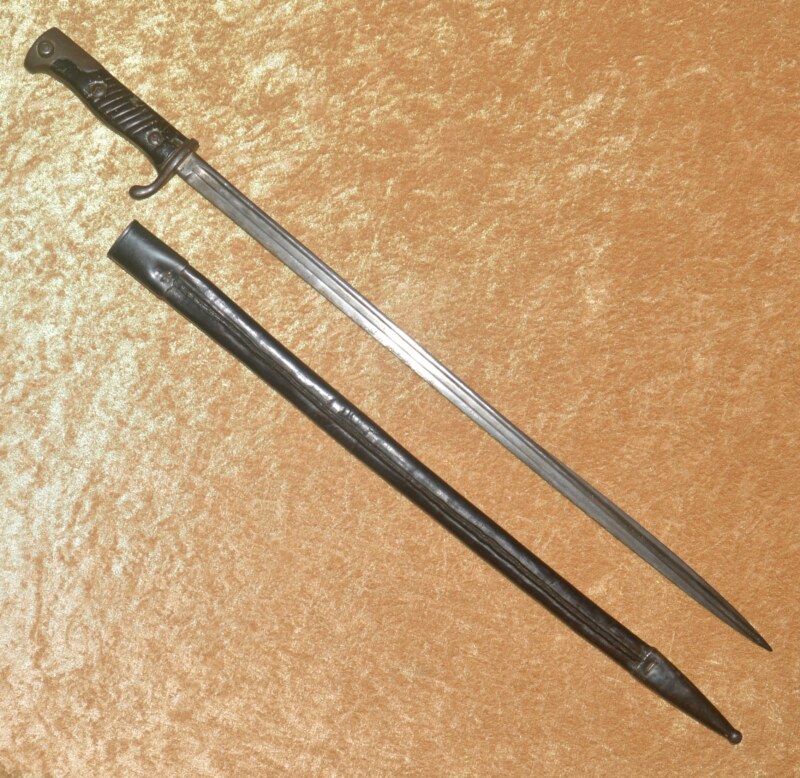
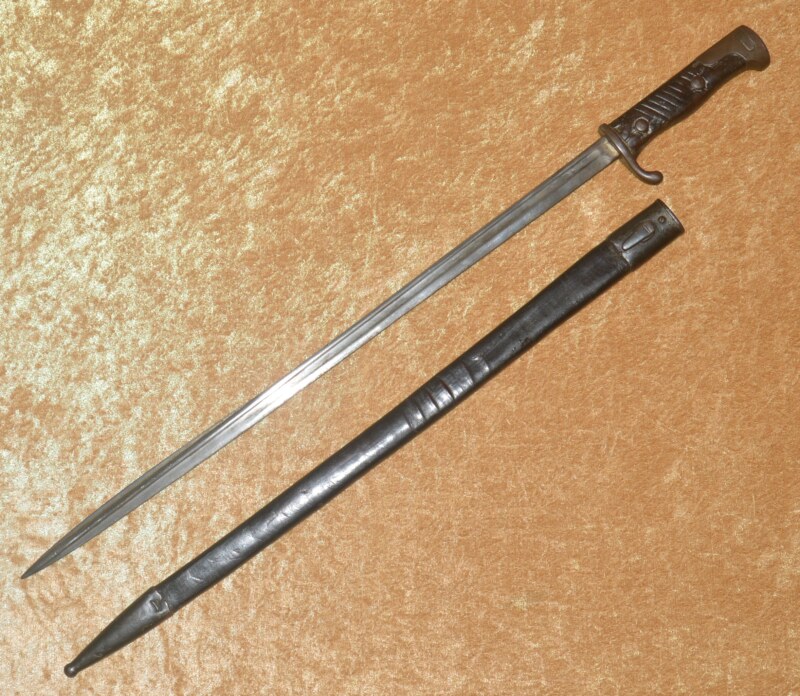

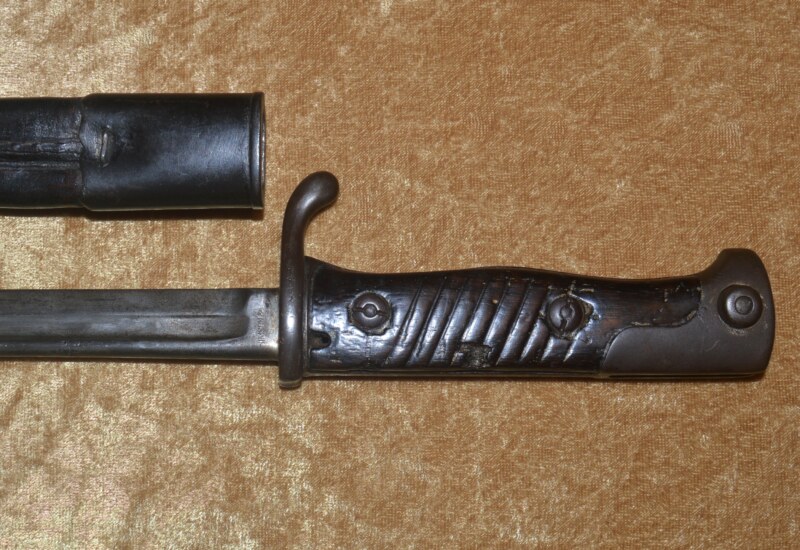
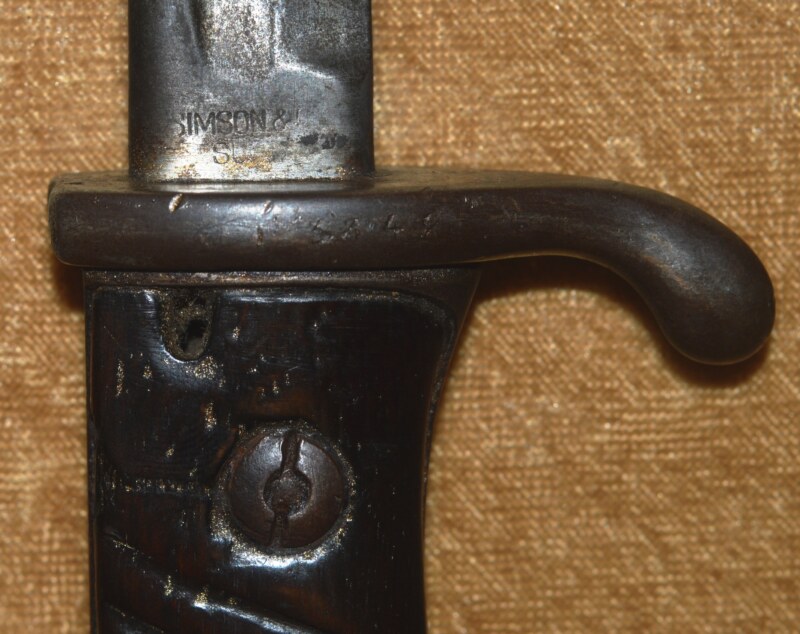
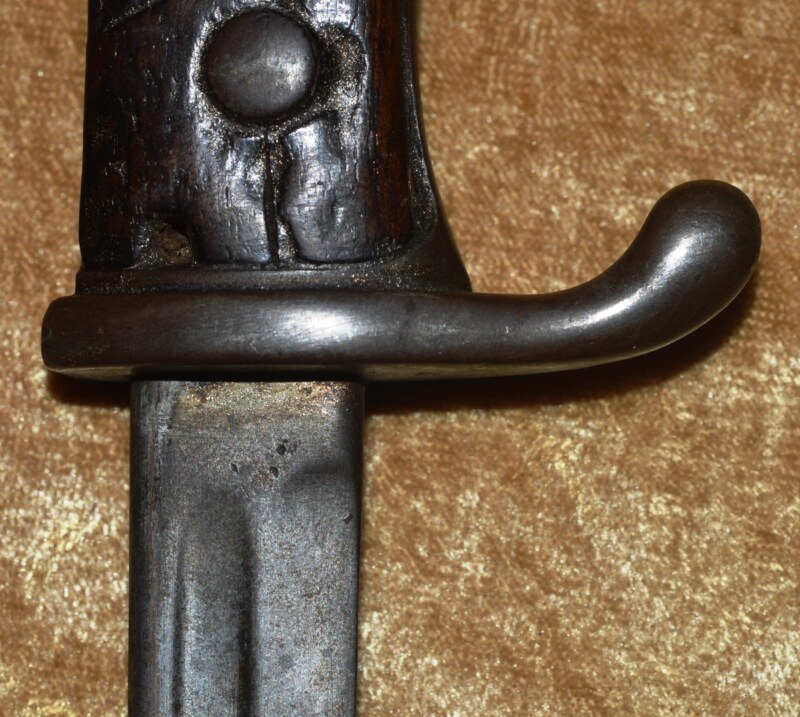
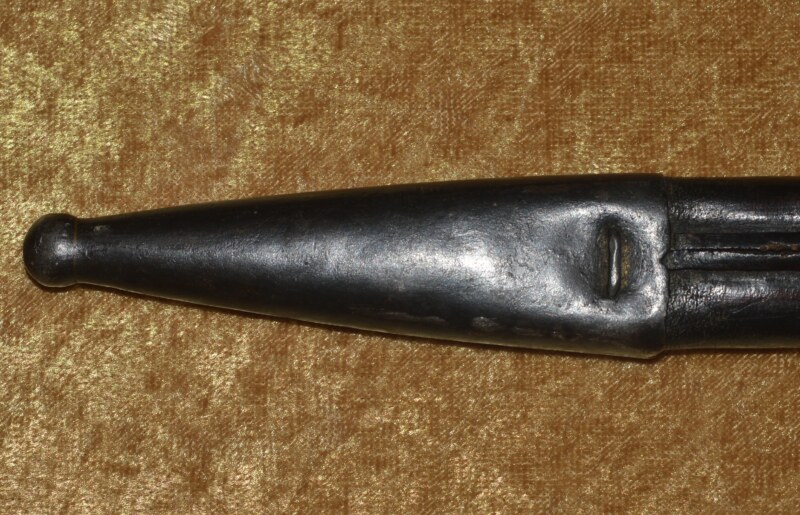
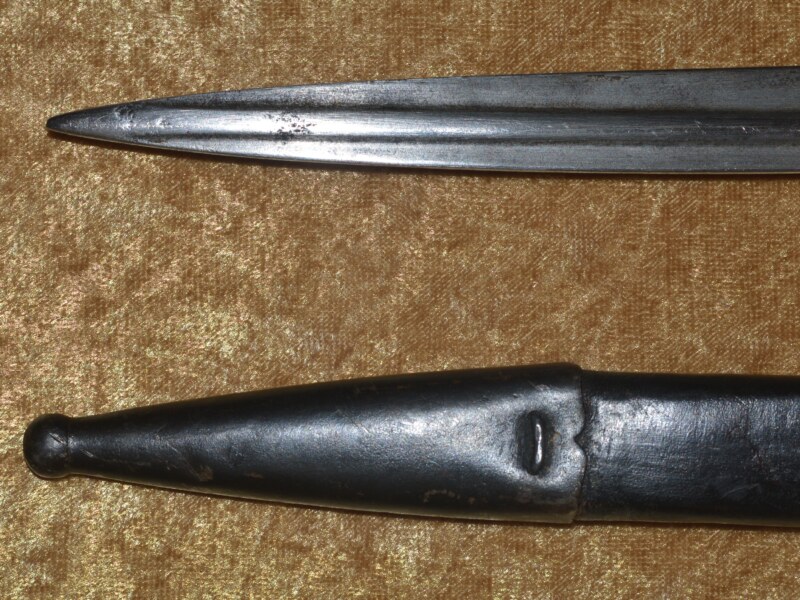

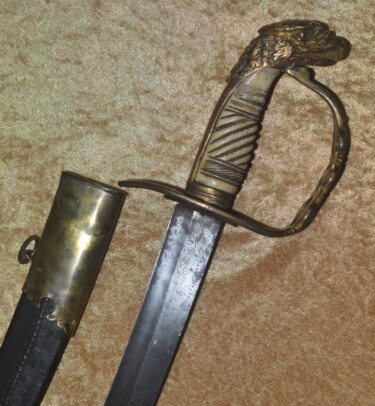 US Eagle Head Artillery Officer’s Sword, ca. 1810
US Eagle Head Artillery Officer’s Sword, ca. 1810 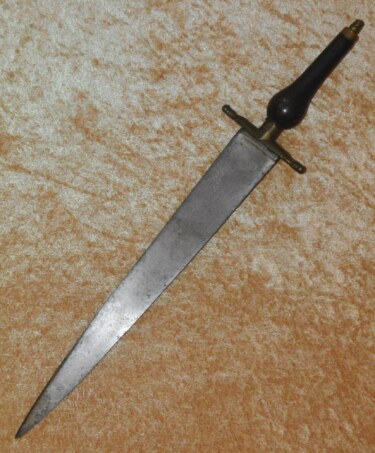 Spanish (Catalonia or Valencia) Plug Bayonet, ca. 1800
Spanish (Catalonia or Valencia) Plug Bayonet, ca. 1800 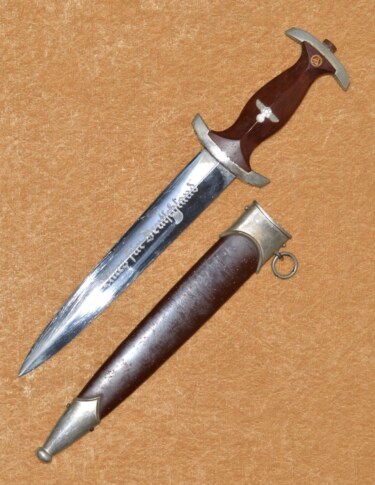 Nazi Model 1933 SA Dagger by F.W. Holler
Nazi Model 1933 SA Dagger by F.W. Holler 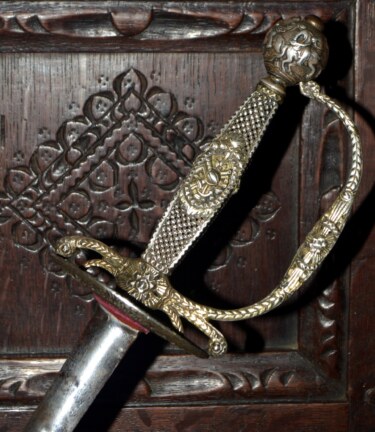 Silver and Parcel Gilt Smallsword, Probably French, 2nd Half 18th C
Silver and Parcel Gilt Smallsword, Probably French, 2nd Half 18th C